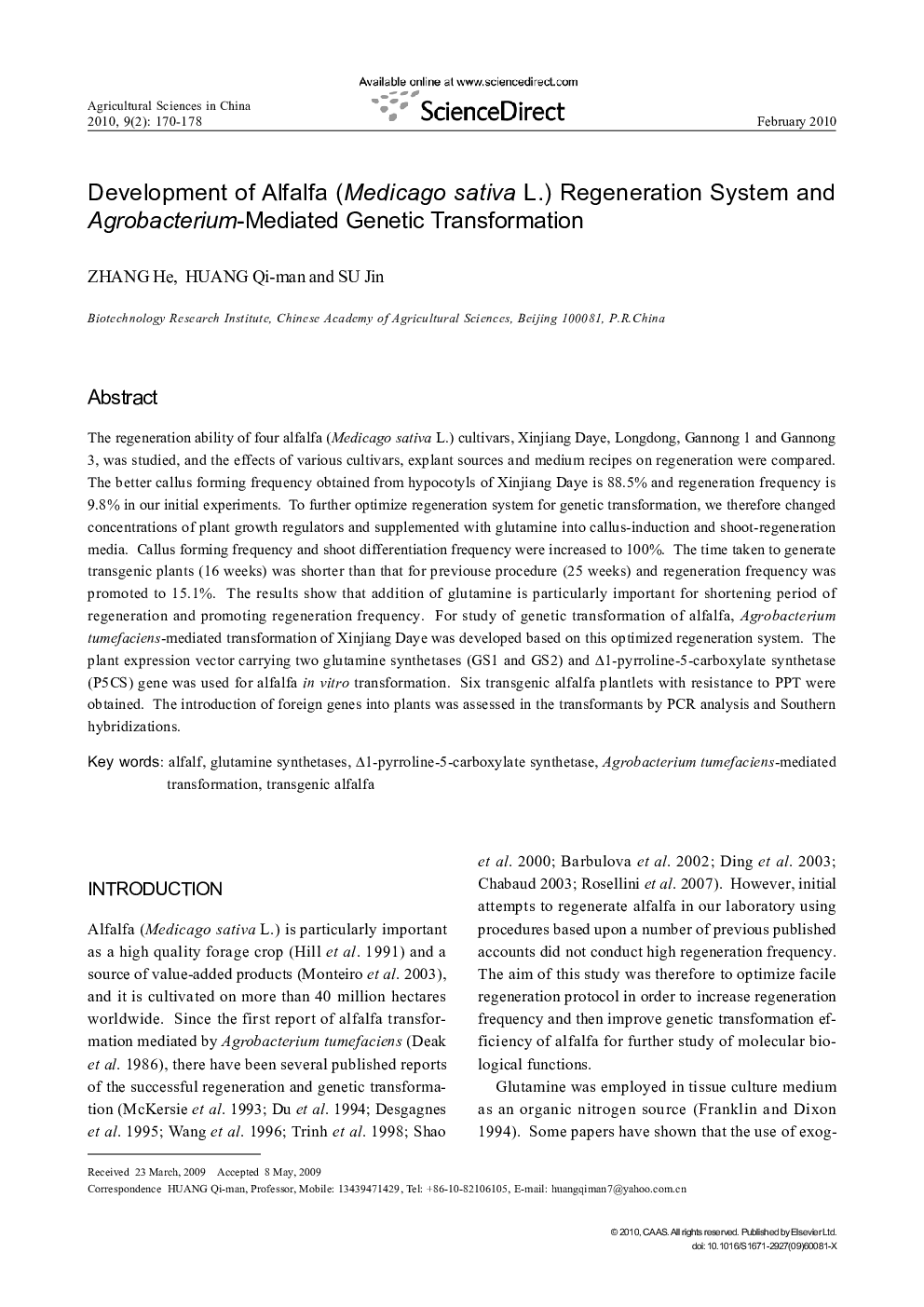| Article ID | Journal | Published Year | Pages | File Type |
|---|---|---|---|---|
| 4490166 | Agricultural Sciences in China | 2010 | 9 Pages |
The regeneration ability of four alfalfa (Medicago sativa L.) cultivars, Xinjiang Daye, Longdong, Gannong 1 and Gannong 3, was studied, and the effects of various cultivars, explant sources and medium recipes on regeneration were compared. The better callus forming frequency obtained from hypocotyls of Xinjiang Daye is 88.5% and regeneration frequency is 9.8% in our initial experiments. To further optimize regeneration system for genetic transformation, we therefore changed concentrations of plant growth regulators and supplemented with glutamine into callus-induction and shoot-regeneration media. Callus forming frequency and shoot differentiation frequency were increased to 100%. The time taken to generate transgenic plants (16 weeks) was shorter than that for previouse procedure (25 weeks) and regeneration frequency was promoted to 15.1%. The results show that addition of glutamine is particularly important for shortening period of regeneration and promoting regeneration frequency. For study of genetic transformation of alfalfa, Agrobacterium tumefaciens-mediated transformation of Xinjiang Daye was developed based on this optimized regeneration system. The plant expression vector carrying two glutamine synthetases (GS1 and GS2) and Δ1-pyrroline-5-carboxylate synthetase (P5CS) gene was used for alfalfa in vitro transformation. Six transgenic alfalfa plantlets with resistance to PPT were obtained. The introduction of foreign genes into plants was assessed in the transformants by PCR analysis and Southern hybridizations.
